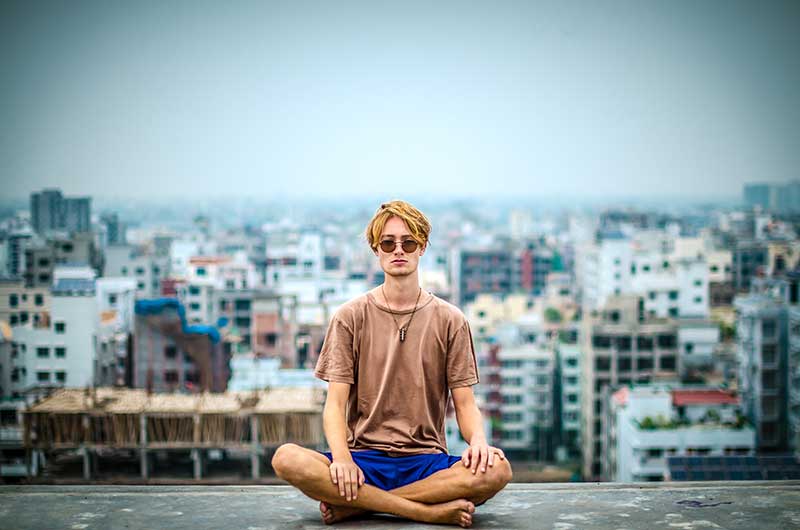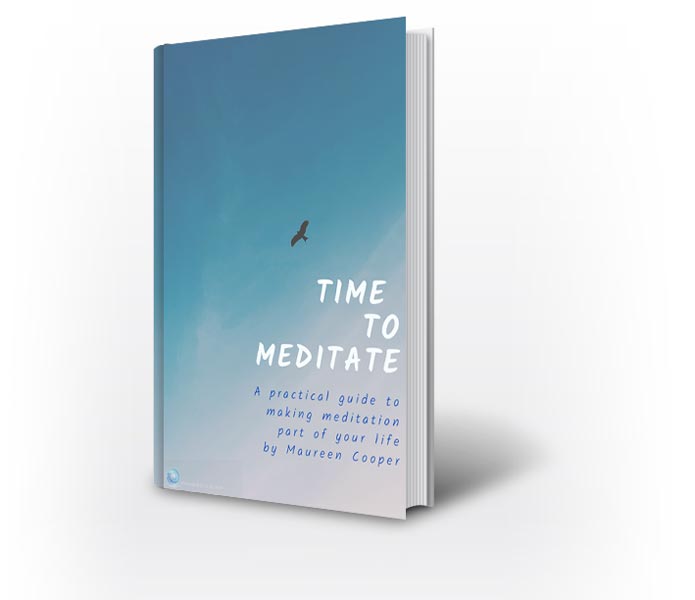How do you end your meditation session? Do you find that it’s very easy to hear your timer go off for the time you’ve allowed and then just get up and carry on? It’s a shame to do that though, because you are missing out on a great chance to mix meditation with life.
Here is are some simple steps that I work with that help me to take my meditation forward into my day.
1. What is your purpose in meditating?
Remind yourself why you try to meditateregularly. Most people that I work with came to meditation because they wanted more peace and clarity in their lives. Sometimes there is an element of wanting to work with yourself in order to be more useful for other people. I started meditation because it was important to me to try and make some sense of how the world works and to know my own mind.
Being able to define your purpose for meditating is a good way to inspire yourself to keep doing it—especially if it gets hard. Reminding yourself of that purpose as you end your meditation session is a good way to appreciate the effort you have made. You seal the benefit of the session and can count on it to get you back to your meditation seat for the next session.
2. Don’t switch off your meditation
If you are busy, with a long to-do list, you can end up shrugging off your meditation in your rush to get back to doing what needs to be done. After all the effort you have made to do your meditation, that’s a real pity.
Maybe you have been focusing on your breathduring your meditation. As you end your meditation and get back into activity, keep that focus for a few minutes. You can be aware of your breathing along with engaging in an activity. As you sit at your keyboard, you can check your breathing. As you walk to a meeting, you can be aware of your breath.
Try to gently maintain the atmosphere of your meditation session.
3. With your next action, emphasize mindfulness
While we are meditating, we are being present and mindful of where we are and what we are doing. A good way to maintain the atmosphere of your meditation is to focus on being mindfulas you move into activity.
As you get up from your seat, notice how you move your body, fold up your shawl, or pick up your timer. Move slowly and pay attention to what you are doing. Instead of letting your mind race ahead to what you are going to do next, keep your focus on what you are doing in that very moment.
Without straining or getting tense about it see how long you can maintain this level of mindfulness.
4. Give yourself time
It’s worth adding a few extra minutes to any meditation session to allow yourself time to settle into it and then to come out of it with presence. If you are up against the clock, then it is very hard to end your meditation in a way that helps you to take it into activity.
Remember that we are trying to make meditation a habit. Think of all the things you have learnt to do in your life—they all need lots of practice and regular repetition. If you have learned a second language, or ridden a bike, or play a musical instrument then you know how determined you need to be to make progress.
Meditation is no different in that respect. It needs proper time and attention. It can’t be rushed. It’s much better to do regular short sessions, with proper set up and a good way of finishing than to try and blitz through by trying for a long sit and then making yourself late for the next thing you need to do.
5. The importance of mixing meditation with life
For most of us it is only possible to spend short periods of time meditating. Even if we manage to meditate for an hour—and it takes time to build up to that—there are still 23 non-meditation hours left in the day. So mixing meditation with life is an important part of learning to meditate.
The truth is that once we gain some confidence with meditation it is possible to meditate just about anywhere. Once we are clear on our method and relaxed about being able to do it, then it’s just a case of finding moments throughout the day where we can take a short space for meditation.
Here are a couple of things you can try
My most simple technique is to take an activity that I do a lot—like washing my hands—and then try to be fully present each time I do the activity. So, if I am not present, I am usually thinking about what I need to do next as I wash my hands. I go on to automatic pilot and just get it over with. If I am trying to wash my hand mindfully, then I go a little bit slower. I notice how I turn on the tap, the temperature of the water, and the feeling of it flowing over my hands. Applying the soap gives me a chance to observe the bubbles and enjoy the scent. There is time to notice the texture of the towel and the roughness of it rubbing against my skin. The whole experience only takes one or two minutes, but it brings me right into the present moment and cuts the overlapping flow of my thoughts and concerns.
Standing in line at the supermarket check-out, waiting for the tram, or walking from one meeting to another all give opportunities for a short meditation. Even if it is only one or two minutes, the effect of stopping, coming home to yourself and watching your breath will help to settle you into the habit of meditation. Normally we would just let our minds wander and go over things that are pre-occupying us. This way, we can refresh our mood and increase our awareness.
How you end your meditation may seem to be quite a small, practical point in the whole project of trying to make room for meditation in your life. The thing is that it can also be a way of increasing the impact that meditation has and making it easier to bring to mind during the day.

How to Start Meditation in a Way that Will Last
If you enjoyed this blog you might like to try this beginner’s course in meditation.

TIME TO MEDITATE
A 60-page e-book packed full of practical tips and guidance on how to make meditation part of your life

